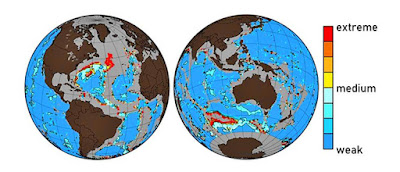Over the next 80 years, a warming planet will cause more powerful tornado winds, triggering bigger and more regular severe waves, inning accordance with new research.
Scientists substitute Earth's changing environment under various wind problems, recreating thousands of substitute tornados to assess the size and regularity of severe occasions.
They find that if we do not curb global emissions, there will be an increase of up to 10% in the regularity and size of severe waves in comprehensive sea areas.
On the other hand, scientists found there would certainly be a significantly lower increase where effective actions are required to decrease emissions and reliance on nonrenewable fuel sources. In both situations, the biggest increase in size and regularity of severe waves remains in the Southerly Sea.
More tornados and severe waves would certainly outcome in rising sea degrees and damage to facilities, says Ian Young, a teacher and facilities design scientist at the College of Melbourne.
"About 290 million individuals throughout the globe currently live in areas where there's a 1% possibility of flooding every year," Young says.
"An increase in the risk of severe wave occasions may be devastating, as bigger and more regular tornados will cause more swamping and coastline disintegration."
The study shows that the Southerly Sea area is significantly more susceptible to severe wave increases with potential impact to Australian, Pacific, and Southern American coastlines by completion of 21st century, says lead scientist Alberto Meucci, a postdoctoral other in sea wave modeling.
"The outcomes we have seen present another solid situation for decrease of emissions through shift to clean power if we want to decrease the seriousness of damage to global coastlines," Meucci says.
The study shows up in Scientific research Advancements. Additional scientists from the College of Melbourne, CSIRO Seas and Atmosphere in Hobart, and the IHE-Delft Institute for Sprinkle Education and learning in the Netherlands added to the work.




